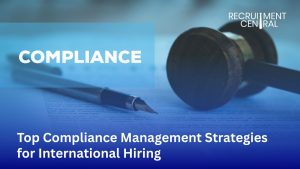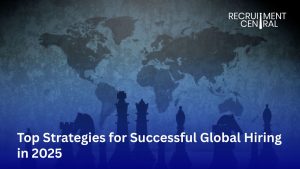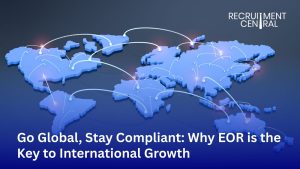ChatGPT has done extreme damage to the whole hiring process. Candidates after reading a lucrative job poster, immediately feed prompts to get created a resume and then share with the HR. Even after leveraging the ATS and other such tools, resumes unfortunately get shortlisted and sometimes candidates called for interviews. But when the real operations start, things take a tragic shape. “What is a MIS”, he said with a straight face and left me bewildered. A HR manager told me this instance from a hiring scenario for a DI and DA specialist role.
You know what more tragic is? It’s HR professionals using ChatGPT to create Job descriptions (JD), then how would they expect they will get the right fit when at first place, they don’t even have an idea what they are hiring for. No inputs from the operations department and generic job posters could land the whole team in trouble. “We hired a video editor, and he is not able to create visuals and graphics”. I replied, “it’s the job of a motion graphic designer, and a video editor just stitches shorts, matches colors, mixes sound and follows the series given/shown on storyline series or SBT to give you a final video”, My HR manager friend was again bewildered
An efficient and effective hiring process is a well designed step-by-step process which enables an organization to hire a new employee. For this you need to recruit the right fits in the HR department first. They will only be able to identify talent needs, recruit from available talent pools and eventually hire the most qualified and suitable candidates. This guide will help you with the steps involved in the hiring process which could be applied to various industries regardless of company size.
What Is Social Recruiting?
Social recruiting is highly popular these days which refers to the process of recruiting candidates via the social media platforms, such as LinkedIn, Facebook, and Twitter, and other similar websites, which are online forums, job boards, and blogs. Social recruiting is also popularly known as the social media recruiting, social hiring and social recruitment.
When everything has been marketed digitally these days, then why not the recruiters would use the highly popular social media platforms to get the right talent and devise the ways with the existing conventional ones.
As per a recent study, nearly three-quarters of workers between the age group of 18-34 have landed on their most recent job via these social media platforms. Moreover, about 90% of recruiters have also reported that they have sourced desired talent from LinkedIn. When utilized properly by understanding the trends and optimizing your job posters accordingly, it could get your best and sometimes even unexpected results. Social recruiting helps recruiters reach passive candidates, get more referrals, target desired candidates, and save money.
Simple Steps In Hiring Process
1. Understand The hiring need
The hiring process starts by identifying a need within different teams of your organization. Requirements mostly vary from filling a vacated position, better distributing a team’s workload, or expanding the scope of organizational tasks.
2. Get A Recruitment Plan
After the requirement has been identified for a specific role, the next step is to form job roles and responsibilities for the same. In the case of newly created positions, operations must clearly download to the HR on how the new role must align with their goals and purpose. You can simply start with planning how to run announcements on the new position, both internally and externally, set criteria for phases of candidate screening, how the interview process will proceed and the team involved in that .
3. Comprehensive Job Description
Next crucial step is to get a job description from the operations team and ask them to include a prioritized list of job skills, special qualifications, desired characteristics, and relevant experience. The job description must not be generic and later you can enhance it by including factors like regarding salary and benefits.
4. Advertising & Announcements
Experts suggest that you must start by notifying your existing workforce. Most of the time the whole task and cost of advertising the job stops there. If, however, you don;t find a right fit then go on external platforms. Leveraging several online platforms and word of mouth could be your best options to let the people know about it.
5. Review & Shortlist
Using the existing mechanism in place to get applications via email, an applicant tracking system (ATS), etc and later reviewing and shortlisting them. After you have shortlisted a batch of best options of qualified applications, the hiring team must review the remaining candidates and schedule the interviews.
6.Initial Screening
Initial interviews start with introductory calls with HR representatives. This stage only is enough to determine if candidates possess the required qualifications to match the position and align with an organization’s scope, culture and values.
7. Final Interviews
It varies and depends upon the type of industry the company is in and the size of the organization and the process set by the hiring committee. Single or multiple rounds could be scheduled with candidates. Final interviews mainly include conversations with the company’s senior management or a more in-depth specific/generic discussion with an interviewer from the initial stage.
8. Applicant Assessment
After the interviewing process is completed, the company must assign applicants with one or more standardized tests. These assessments help to measure a wide range of variables which includes personality traits, problem-solving ability, team-building skills, reasoning, reading comprehension, emotional intelligence, and more.
9. Background Check
Background checks are intended to review candidates’ history, verify employment history, any criminal records and eligibility, and also run credit checks.
10. Decision
After the background and the reference checks are completed the hiring staff then only identifies the ideal fits. Experts also suggest that hiring staff must also create a backup, in case the selected candidate fails the background check or they settle on no negotiations or in case of no show.
11. Job offer
The offer letter must be forwarded to the selected ones as soon as possible,a s you have been considering multiple ones for a single position, they might also have been in interviews with many. The HR team must decide internally which elements of the offer letter are negotiable, and which are not and then share with the candidate.
12. Onboarding
Onboarding the newly hires must be in a welcoming and professional way as it will help them get integrated in a desired manner. A well designed orientation program must be included as a part of the onboarding process, which ensures that your employee has a clear understanding of the expectations, the scope and their purpose of being with you.
Also Read: Top EOR Services Singapore: Simplifying International Expansion
Key Factors To Consider When Hiring
Recruiting the right is often considered as a challenge, but below mentioned are some critical factors that can help you maneuver easily;
1. Experience
If candidates have pertinent and desired experience for the specific or even for the similar roles, they are likely to get you to achieve the success in your team.
2. Potential and Passion
Many times you get candidates who are not experienced but are dedicated enough to learn and drive. They might be a suitable choice for your team as they are eager and quick to learn which mainly is while switching careers and this also provides you to lead the negotiation.
3. Hard skills
Hard skills are generally considered ones which are measurable, technical skills that candidates have acquired in school or learnt with past jobs. In case, if you are hiring civil engineers, it can be helpful to select candidates with experience in computer-aided designs and similar softwares
4. Soft skills
Soft skills are the ones which come into the interpersonal category that help a candidate perform their duties efficiently. For instance, some of the most generous soft skills for professionals are teamwork, communication, critical thinking, decision-making and ability to solve problems.
Conclusion
While you have been hiring for any role within your company there is one factor which no AI can help you with. It’s the ability to understand if the newly hired will adapt the existing culture of your company or not. The culture mainly is the unique propositions of a company. Every company has different setups which mainly depends upon the type of industry they are into, but being adaptive even for a same industry experienced candidate might be sometimes challenging. Apart from understanding the candidate’s capability to get used to, you must also, being an employer or HR professional, make sure within the existing setup that they welcome the new ones and help them settle.







